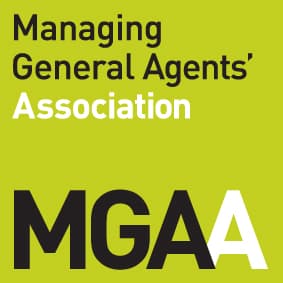
Bradley Chadwick
Partner, Advisory
Grant Thornton UK LLP
The Financial Conduct Authority (FCA) recently issued a Dear CEO letter “FCA Supervision Strategy for Lloyds and the London Market Intermediaries and Managing General Agents (LLMI)” putting LLMI on notice that it will be engaging with and testing firms to see what they have done to address their priorities and concerns as set out in their letter.
Bradley Chadwick considers the FCA letter in conjunction with its updated guidance to consider LLMI’s can do to meet the standards.
The letter names the four drivers of harm that the FCA will focus their supervision strategy on until November 2021 as being:
- Financial resilience and orderly wind down
- Ineffective governance and oversight of business
- Culture and non-financial misconduct
- Business models that provide poor oversight of distribution chains.
Approach to wind down planning
For completeness, the FCA’s guidance can be found in its Wind down Planning Guide (WDPG), FG20/1 Our framework: assessing adequate financial resources and Threshold Conditions on adequate resources (TC 2.4). Yet, that doesn’t cover the full story.
Before you read on, spoiler alert, my team doesn’t have a one-size-fits-all approach. Nor do we have a colour-by-numbers graphic. Our methodology when working with clients is targeted to the specific risks and circumstances of their business.
This methodology is built on unique experiences and hard-won battle scars earned while working with firms on the precipice of wind down, both solvent and insolvent. There’s no more valuable learning ground than this inflection point between wind down and survival, when you’re planning for the worst and hoping for the best.
Governance
The FCA has got it right with its focus on governance.
When leadership focus on, and regularly attend to; identifying and stress-testing scenarios, tightening management information, and then monitoring these dashboards, the company will be far better equipped to identify early warning signs. They are then better placed to mitigate that risk or reduce the impact of a wind down.
For example, a broker who pro-actively steps back and monitors its capacity provider’s pricing and loss ratios should be able to identify early signs of a deterioration in the capacity provider’s trading.
The broker can either engage with the capacity provider to seek comfort that capacity will be in place going forward or make early plans to increase capacity with its other providers. A broker who is not monitoring this could be caught unawares if the capacity provider is required to reduce capacity due to poor results.
Of course, governance goes beyond this. It relates to how the company will make the decision to wind down and how it will oversee its wind down plan, all of which should be discussed and agreed by the board and documented in the wind down plan.
Focus on the FCA’s wind down planning objectives
All parties involved in the planning need to fully understand what the company’s purpose and priorities are when preparing a wind down plan. It can be helpful to study the FCA’s objectives and translate them into your own words:
“An effective wind down plan aims to enable a firm to cease its regulated activities and achieve cancellation of its permission with minimal adverse impacts on its clients, counterparties or the wider markets. This includes scenarios where the firm undertakes a strategic exit as well as an unexpected crisis or insolvency.” The FCA, WDPG, paragraph 1.1
You may choose to translate the FCA’s words into ‘mitigate policyholder detriment, as well as the impact and cost to counterparts, preserve our reputation, return the surplus to shareholders’.
Understand the granularity required for wind down planning
There are different stages to a wind down plan. Each stage requires leaders to exercise and document their judgement regarding the appropriate level of granularity in the plans, as well as their corresponding readiness to implement them. This means asking at each stage:
- What would still need to be done?
- How long would it take?
- What resources are required?
It’s important for judgements to demonstrate familiarity with the complexity of your business, its stakeholders and its counterparts.
It should be noted that, if you can demonstrate strong governance, have identified appropriate scenarios, and are monitoring risk indicators such that you would have time to prepare, then it may not be necessary to have planned to such a detailed level.
An implementable wind down plan should include a tightly documented and defined communication plan. In the period where the implementation of a wind down is imminent, it’s expected that key documents, such as statements for your website, press releases, bespoke instructions to policyholders and counterparts are in draft and ready to go.
Identify all stakeholders in your wind down plan
It’s important to know your stakeholders and document the impact that your wind down may have on them.
This should then be used to understand what actions they could take that may impact your wind down plans. These actions can affect both your practical plans, as well as the resources you may need.
Full analysis of financial resources required for wind down
Analysing and documenting the assumptions about the resources required to deliver an orderly wind down will focus your attention on timing, the impact on your counterparts, and the financial resources that you will need to be able to execute an orderly wind down.
In its guidance, the FCA says firms are to have adequate capital to incur losses and remain solvent, or to fail in an orderly way (FG20/1). The FCA also indicates that these resource estimates should include assessments of extra closure costs and potential litigation costs.
It is useful to consider insolvent wind down scenarios
Use the financial resources analysis discussed above to consider whether a solvent wind down in which you retain control will be practical or not.
If it appears that it’s not practical and you will lose control, it’s critical to consider what the implications of an insolvency would be on your wind down plan. Specifically, what would this mean for policyholders and your counterparts, and what can you do to mitigate that?
What are your options and cut-off procedures for issuing or renewing policies? What protections exist in your terms-of-business-agreement (TOBA) and claims management agreement (CMA) for counterparts to continue to transact?
Consider the wider ecosystem
Do not prepare your plan in isolation.
You’re part of an ecosystem with co-dependencies. Where you make assumptions about counterparts, communicate these with them when the relationship is good and you’re in robust financial health. This will build trust and strengthen the relationship.
Most importantly, remember that the FCA expects LLMI to demonstrate that:
- they have conducted rigorous scenario planning around events that may lead to the closure of the firm
- they have effective governance and controls in place to monitor and respond to risks leading to closure
- the firm has a plan that it can activate to wind down in an orderly manner. Further, the plan should minimise the impact on counterparts, clients and the market.
For further help with wind down planning, contact Bradley Chadwick.




